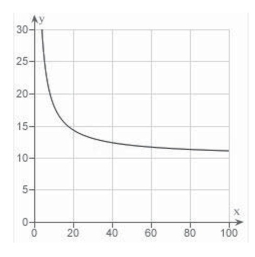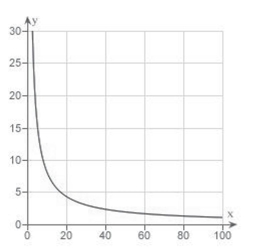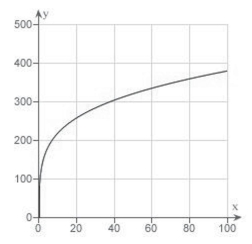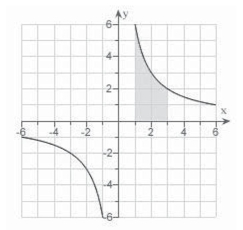Deck 5: Logarithmic, Exponential, and Other Transcendental Functions
سؤال
سؤال
سؤال
سؤال
سؤال
سؤال
سؤال
سؤال
سؤال
سؤال
سؤال
سؤال
سؤال
سؤال
سؤال
سؤال
سؤال
سؤال
سؤال
سؤال
سؤال
سؤال
سؤال
سؤال
سؤال
سؤال
سؤال
سؤال
سؤال
سؤال
سؤال
سؤال
سؤال
سؤال
سؤال
سؤال
سؤال
سؤال
سؤال
سؤال
سؤال
سؤال
سؤال
سؤال
سؤال
سؤال
سؤال
سؤال
سؤال
سؤال
سؤال
سؤال

فتح الحزمة
قم بالتسجيل لفتح البطاقات في هذه المجموعة!
Unlock Deck
Unlock Deck
1/52
العب
ملء الشاشة (f)
Deck 5: Logarithmic, Exponential, and Other Transcendental Functions
1
Find an equation of the tangent line to the graph of  at the point (1,0).
at the point (1,0).
A)
B)
C)
D)
E)
 at the point (1,0).
at the point (1,0).A)

B)

C)

D)

E)


2
Use implicit differentiation to find  at the point
at the point 

A)
B)
C)
D)
E)
 at the point
at the point 

A)

B)

C)

D)

E)


3
Write the following expression as a logarithm of a single quantity. 
A)
B)
C)
D)
E)

A)

B)

C)

D)

E)


4
Find the slope-intercept equation of the line tangent to the graph of  when
when 
A)
B)
C)
D)
E)
 when
when 
A)

B)

C)

D)

E)


فتح الحزمة
افتح القفل للوصول البطاقات البالغ عددها 52 في هذه المجموعة.
فتح الحزمة
k this deck
5
Find the derivative of the function 
A)
B)
C)
D)
E)

A)

B)

C)

D)

E)


فتح الحزمة
افتح القفل للوصول البطاقات البالغ عددها 52 في هذه المجموعة.
فتح الحزمة
k this deck
6
Determine the x-coordinate(s) of any relative extrema and inflection points of the function 
A)
 relative minimum: inflection point:
relative minimum: inflection point:
B)no relative extrema; inflection point:
C)relative minimum: no inflection points
no inflection points
D)no relative extrema; inflection point:
E)relative maximum: inflection point:
inflection point: 

A)

 relative minimum: inflection point:
relative minimum: inflection point:B)no relative extrema; inflection point:

C)relative minimum:
 no inflection points
no inflection pointsD)no relative extrema; inflection point:

E)relative maximum:
 inflection point:
inflection point: 

فتح الحزمة
افتح القفل للوصول البطاقات البالغ عددها 52 في هذه المجموعة.
فتح الحزمة
k this deck
7
What is the domain of the function 
A)
B)
C)
D)
E)

A)

B)

C)

D)

E)


فتح الحزمة
افتح القفل للوصول البطاقات البالغ عددها 52 في هذه المجموعة.
فتح الحزمة
k this deck
8
Find the following limit if it exists:  Use
Use  when appropriate.
when appropriate.
A)
B)
C)
D)
E)
 Use
Use  when appropriate.
when appropriate.A)

B)

C)

D)

E)


فتح الحزمة
افتح القفل للوصول البطاقات البالغ عددها 52 في هذه المجموعة.
فتح الحزمة
k this deck
9
Find the derivative of the function 
A)
B)
C)
D)
E)

A)

B)

C)

D)

E)


فتح الحزمة
افتح القفل للوصول البطاقات البالغ عددها 52 في هذه المجموعة.
فتح الحزمة
k this deck
10
Write the following expression as a logarithm of a single quantity. 
A)
B)
C)
D)
E)

A)

B)

C)

D)

E)


فتح الحزمة
افتح القفل للوصول البطاقات البالغ عددها 52 في هذه المجموعة.
فتح الحزمة
k this deck
11
Use implicit differentiation to find 

A)
B)
C)
D)
E)



A)

B)

C)

D)

E)



فتح الحزمة
افتح القفل للوصول البطاقات البالغ عددها 52 في هذه المجموعة.
فتح الحزمة
k this deck
12
Find the derivative of the function 
A)
B)
C)
D)
E)

A)

B)

C)

D)

E)


فتح الحزمة
افتح القفل للوصول البطاقات البالغ عددها 52 في هذه المجموعة.
فتح الحزمة
k this deck
13
Differentiate the function 
A)
B)
C)
D)
E)

A)

B)

C)

D)

E)


فتح الحزمة
افتح القفل للوصول البطاقات البالغ عددها 52 في هذه المجموعة.
فتح الحزمة
k this deck
14
Find the following limit if it exists:  Use
Use  when appropriate.
when appropriate.
A)
B)
C)
D)
E)
 Use
Use  when appropriate.
when appropriate.A)

B)

C)

D)

E)


فتح الحزمة
افتح القفل للوصول البطاقات البالغ عددها 52 في هذه المجموعة.
فتح الحزمة
k this deck
15
What is the domain of the function 
A)
B)
C)
D)
E)

A)

B)

C)

D)

E)


فتح الحزمة
افتح القفل للوصول البطاقات البالغ عددها 52 في هذه المجموعة.
فتح الحزمة
k this deck
16
Find the derivative of the function 
A)
B)
C)
D)
E)

A)

B)

C)

D)

E)


فتح الحزمة
افتح القفل للوصول البطاقات البالغ عددها 52 في هذه المجموعة.
فتح الحزمة
k this deck
17
Use implicit differentiation to find 
A)
B)
C)
D)
E)

A)

B)

C)

D)

E)


فتح الحزمة
افتح القفل للوصول البطاقات البالغ عددها 52 في هذه المجموعة.
فتح الحزمة
k this deck
18
Differentiate the function 
A)
B)
C)
D)
E)

A)

B)

C)

D)

E)


فتح الحزمة
افتح القفل للوصول البطاقات البالغ عددها 52 في هذه المجموعة.
فتح الحزمة
k this deck
19
Locate any relative extrema and inflection points of the function  Use a graphing utility to confirm your results.
Use a graphing utility to confirm your results.
A)relative minimum value: no inflection points
no inflection points
B)relative minimum value: inflection point:
inflection point: 
C)relative maximum value: inflection point:
inflection point: 
D)relative minimum value: no inflection points
no inflection points
E)relative maximum value: no inflection points
no inflection points
 Use a graphing utility to confirm your results.
Use a graphing utility to confirm your results.A)relative minimum value:
 no inflection points
no inflection pointsB)relative minimum value:
 inflection point:
inflection point: 
C)relative maximum value:
 inflection point:
inflection point: 
D)relative minimum value:
 no inflection points
no inflection pointsE)relative maximum value:
 no inflection points
no inflection points
فتح الحزمة
افتح القفل للوصول البطاقات البالغ عددها 52 في هذه المجموعة.
فتح الحزمة
k this deck
20
Determine the x-coordinate(s) of any relative extrema and inflection points of the function 
A) relative minimum: no inflection points
relative minimum: no inflection points
B)relative maximum ; inflection point:
; inflection point: 
C)no relative maximum or minimum; inflection point:
D)no relative extrema or inflection points.
E) relative minimum:
relative minimum:  inflection point:
inflection point:

A)
 relative minimum: no inflection points
relative minimum: no inflection pointsB)relative maximum
 ; inflection point:
; inflection point: 
C)no relative maximum or minimum; inflection point:

D)no relative extrema or inflection points.
E)
 relative minimum:
relative minimum:  inflection point:
inflection point:
فتح الحزمة
افتح القفل للوصول البطاقات البالغ عددها 52 في هذه المجموعة.
فتح الحزمة
k this deck
21
Suppose the table below shows the temperature  at which a given liquid boils at selected pressures p (pounds per square inch).A model that approximates the data is
at which a given liquid boils at selected pressures p (pounds per square inch).A model that approximates the data is  Find the rate of change of T with respect to p when P = 20.Round
Find the rate of change of T with respect to p when P = 20.Round
Your answer to two decimal places.
A)
B)
C)
D)
E)
 at which a given liquid boils at selected pressures p (pounds per square inch).A model that approximates the data is
at which a given liquid boils at selected pressures p (pounds per square inch).A model that approximates the data is  Find the rate of change of T with respect to p when P = 20.Round
Find the rate of change of T with respect to p when P = 20.RoundYour answer to two decimal places.

A)

B)

C)

D)

E)


فتح الحزمة
افتح القفل للوصول البطاقات البالغ عددها 52 في هذه المجموعة.
فتح الحزمة
k this deck
22
Suppose the table below shows the temperature  at which a given liquid boils at selected pressures p (pounds per square inch).A model that approximates the data is
at which a given liquid boils at selected pressures p (pounds per square inch).A model that approximates the data is 
A)1
B)0
C)
D)
E)
 at which a given liquid boils at selected pressures p (pounds per square inch).A model that approximates the data is
at which a given liquid boils at selected pressures p (pounds per square inch).A model that approximates the data is 
A)1
B)0
C)

D)

E)


فتح الحزمة
افتح القفل للوصول البطاقات البالغ عددها 52 في هذه المجموعة.
فتح الحزمة
k this deck
23
Find 
A)
B)
C)
D)
E)

A)

B)

C)

D)

E)


فتح الحزمة
افتح القفل للوصول البطاقات البالغ عددها 52 في هذه المجموعة.
فتح الحزمة
k this deck
24
Find the solution of the differential equation  which passes through the point
which passes through the point 
A)
B)
C)
D)
E)
 which passes through the point
which passes through the point 
A)

B)

C)

D)

E)


فتح الحزمة
افتح القفل للوصول البطاقات البالغ عددها 52 في هذه المجموعة.
فتح الحزمة
k this deck
25
Suppose the term of a mortgage t (in years) can be approximated by  where x is the monthly payment in dollars.Use
where x is the monthly payment in dollars.Use
The model to approximate the term of a home mortgage for which the monthly payment is What is the total amount paid? Round your answer to the nearest cent.Your answer may be slightly
What is the total amount paid? Round your answer to the nearest cent.Your answer may be slightly
Different depending on the number of digits your technology uses in computations.
A)
B)
C)
D)
E)
 where x is the monthly payment in dollars.Use
where x is the monthly payment in dollars.UseThe model to approximate the term of a home mortgage for which the monthly payment is
 What is the total amount paid? Round your answer to the nearest cent.Your answer may be slightly
What is the total amount paid? Round your answer to the nearest cent.Your answer may be slightlyDifferent depending on the number of digits your technology uses in computations.
A)

B)

C)

D)

E)


فتح الحزمة
افتح القفل للوصول البطاقات البالغ عددها 52 في هذه المجموعة.
فتح الحزمة
k this deck
26
Find the indefinite integral 
A)
B)
C)
D)
E)

A)

B)

C)

D)

E)


فتح الحزمة
افتح القفل للوصول البطاقات البالغ عددها 52 في هذه المجموعة.
فتح الحزمة
k this deck
27
Find 
A)
B)
C)
D)
E)

A)

B)

C)

D)

E)


فتح الحزمة
افتح القفل للوصول البطاقات البالغ عددها 52 في هذه المجموعة.
فتح الحزمة
k this deck
28
Suppose the term of a mortgage t (in years) can be approximated by  where x is the monthly payment in dollars.Find
where x is the monthly payment in dollars.Find
The instantaneous rate of change of t with respect to x when Round your answer to four
Round your answer to four
Decimal places.
A)0.0044
B)-0.1619
C)0.0619
D)-0.0619
E)-0.0044
 where x is the monthly payment in dollars.Find
where x is the monthly payment in dollars.FindThe instantaneous rate of change of t with respect to x when
 Round your answer to four
Round your answer to fourDecimal places.
A)0.0044
B)-0.1619
C)0.0619
D)-0.0619
E)-0.0044

فتح الحزمة
افتح القفل للوصول البطاقات البالغ عددها 52 في هذه المجموعة.
فتح الحزمة
k this deck
29
Find the indefinite integral. 
A)
B)
C)
D)
E)

A)

B)

C)

D)

E)


فتح الحزمة
افتح القفل للوصول البطاقات البالغ عددها 52 في هذه المجموعة.
فتح الحزمة
k this deck
30
Find the indefinite integral. 
A)
B)
C)
D)
E)

A)

B)

C)

D)

E)


فتح الحزمة
افتح القفل للوصول البطاقات البالغ عددها 52 في هذه المجموعة.
فتح الحزمة
k this deck
31
Find the indefinite integral. 
A)
B)
C)
D)
E)

A)

B)

C)

D)

E)


فتح الحزمة
افتح القفل للوصول البطاقات البالغ عددها 52 في هذه المجموعة.
فتح الحزمة
k this deck
32
Find the indefinite integral 
A)
B)
C)
D)
E)

A)

B)

C)

D)

E)


فتح الحزمة
افتح القفل للوصول البطاقات البالغ عددها 52 في هذه المجموعة.
فتح الحزمة
k this deck
33
Suppose the table below shows the temperature  at which a given liquid boils at selected pressures p (pounds per square inch).A model that approximates the data is
at which a given liquid boils at selected pressures p (pounds per square inch).A model that approximates the data is  Use a graphing utility to graph
Use a graphing utility to graph 

A)
B)
C)
D)
E)
 at which a given liquid boils at selected pressures p (pounds per square inch).A model that approximates the data is
at which a given liquid boils at selected pressures p (pounds per square inch).A model that approximates the data is  Use a graphing utility to graph
Use a graphing utility to graph 

A)

B)

C)

D)

E)


فتح الحزمة
افتح القفل للوصول البطاقات البالغ عددها 52 في هذه المجموعة.
فتح الحزمة
k this deck
34
Find the indefinite integral of 
A)
B)
C)
D)
E)

A)

B)

C)

D)

E)


فتح الحزمة
افتح القفل للوصول البطاقات البالغ عددها 52 في هذه المجموعة.
فتح الحزمة
k this deck
35
Find 
A)
B)
C)
D)
E)

A)

B)

C)

D)

E)


فتح الحزمة
افتح القفل للوصول البطاقات البالغ عددها 52 في هذه المجموعة.
فتح الحزمة
k this deck
36
Use integration to find the particular solution of the differential equation  which passes through the point
which passes through the point 
A)
B)
C)
D)
E)
 which passes through the point
which passes through the point 
A)

B)

C)

D)

E)


فتح الحزمة
افتح القفل للوصول البطاقات البالغ عددها 52 في هذه المجموعة.
فتح الحزمة
k this deck
37
The relationship between the number of decibels  and the intensity I of sound in watts per centimeter squared is
and the intensity I of sound in watts per centimeter squared is  Determine the number of decibels of a sound
Determine the number of decibels of a sound
With an intensity of watts per square centimeter.
watts per square centimeter.
A)250 decibels
B)65 decibels
C)70 decibels
D) decibels
decibels
E)75 decibels
 and the intensity I of sound in watts per centimeter squared is
and the intensity I of sound in watts per centimeter squared is  Determine the number of decibels of a sound
Determine the number of decibels of a soundWith an intensity of
 watts per square centimeter.
watts per square centimeter.A)250 decibels
B)65 decibels
C)70 decibels
D)
 decibels
decibelsE)75 decibels

فتح الحزمة
افتح القفل للوصول البطاقات البالغ عددها 52 في هذه المجموعة.
فتح الحزمة
k this deck
38
Find the solution of the differential equation  which passes through the point
which passes through the point 
A)
B)
C)
D)
E)
 which passes through the point
which passes through the point 
A)

B)

C)

D)

E)


فتح الحزمة
افتح القفل للوصول البطاقات البالغ عددها 52 في هذه المجموعة.
فتح الحزمة
k this deck
39
Use logarithmic differentiation to find the derivative of 
A)
B)
C)
D)
E)

A)

B)

C)

D)

E)


فتح الحزمة
افتح القفل للوصول البطاقات البالغ عددها 52 في هذه المجموعة.
فتح الحزمة
k this deck
40
Find the indefinite integral. 
A)
B)
C)
D)
E)

A)

B)

C)

D)

E)


فتح الحزمة
افتح القفل للوصول البطاقات البالغ عددها 52 في هذه المجموعة.
فتح الحزمة
k this deck
41
Find the area of the region given below bounded by the graph of 

A)
B)
C)
D)
E)


A)

B)

C)

D)

E)


فتح الحزمة
افتح القفل للوصول البطاقات البالغ عددها 52 في هذه المجموعة.
فتح الحزمة
k this deck
42
Find 
A)
B)
C)
D)
E)

A)

B)

C)

D)

E)


فتح الحزمة
افتح القفل للوصول البطاقات البالغ عددها 52 في هذه المجموعة.
فتح الحزمة
k this deck
43
Suppose a population of bacteria is changing at a rate of  where t is the time in days.The initial population (when t = 0) is 500.Write an equation that gives the population at
where t is the time in days.The initial population (when t = 0) is 500.Write an equation that gives the population at
Any time t.
A)
B)
C)
D)
E)
 where t is the time in days.The initial population (when t = 0) is 500.Write an equation that gives the population at
where t is the time in days.The initial population (when t = 0) is 500.Write an equation that gives the population atAny time t.
A)

B)

C)

D)

E)


فتح الحزمة
افتح القفل للوصول البطاقات البالغ عددها 52 في هذه المجموعة.
فتح الحزمة
k this deck
44
Find the time required for an object to cool from  by evaluating
by evaluating  where t is time in minutes.Round your answer to four decimal places.
where t is time in minutes.Round your answer to four decimal places.
A)6.4346 minutes
B)4.4251 minutes
C)3.6907 minutes
D)4.0598 minutes
E)5.8496 minutes
 by evaluating
by evaluating  where t is time in minutes.Round your answer to four decimal places.
where t is time in minutes.Round your answer to four decimal places.A)6.4346 minutes
B)4.4251 minutes
C)3.6907 minutes
D)4.0598 minutes
E)5.8496 minutes

فتح الحزمة
افتح القفل للوصول البطاقات البالغ عددها 52 في هذه المجموعة.
فتح الحزمة
k this deck
45
Find the area of the region bounded by the graphs of the equations  Round your answer to four decimal places.
Round your answer to four decimal places.
A)13.6566
B)12.3178
C)12.6566
D)11.3178
E)12.7041
 Round your answer to four decimal places.
Round your answer to four decimal places.A)13.6566
B)12.3178
C)12.6566
D)11.3178
E)12.7041

فتح الحزمة
افتح القفل للوصول البطاقات البالغ عددها 52 في هذه المجموعة.
فتح الحزمة
k this deck
46
Evaluate the definite integral 
A)
B)
C)
D)
E)

A)

B)

C)

D)

E)


فتح الحزمة
افتح القفل للوصول البطاقات البالغ عددها 52 في هذه المجموعة.
فتح الحزمة
k this deck
47
Evaluate the definite integral. 
A)
B)
C)
D)
E)

A)

B)

C)

D)

E)


فتح الحزمة
افتح القفل للوصول البطاقات البالغ عددها 52 في هذه المجموعة.
فتح الحزمة
k this deck
48
Evaluate 
A)
B)
C)
D)
E)

A)

B)

C)

D)

E)


فتح الحزمة
افتح القفل للوصول البطاقات البالغ عددها 52 في هذه المجموعة.
فتح الحزمة
k this deck
49
Suppose a population of bacteria is changing at a rate of  where t is the time in days.The initial population (when t = 0) is 1,500.Identify an equation that gives the
where t is the time in days.The initial population (when t = 0) is 1,500.Identify an equation that gives the
Population at any time t and use it to find the population when days.Round your answer to the
days.Round your answer to the
Nearest integer.
A)12,783
B)11,525
C)13,533
D)10,772
E)11,522
 where t is the time in days.The initial population (when t = 0) is 1,500.Identify an equation that gives the
where t is the time in days.The initial population (when t = 0) is 1,500.Identify an equation that gives thePopulation at any time t and use it to find the population when
 days.Round your answer to the
days.Round your answer to theNearest integer.
A)12,783
B)11,525
C)13,533
D)10,772
E)11,522

فتح الحزمة
افتح القفل للوصول البطاقات البالغ عددها 52 في هذه المجموعة.
فتح الحزمة
k this deck
50
Find 
A)
B)
C)
D)
E)

A)

B)

C)

D)

E)


فتح الحزمة
افتح القفل للوصول البطاقات البالغ عددها 52 في هذه المجموعة.
فتح الحزمة
k this deck
51
Find 
A)
B)
C)
D)
E)

A)

B)

C)

D)

E)


فتح الحزمة
افتح القفل للوصول البطاقات البالغ عددها 52 في هذه المجموعة.
فتح الحزمة
k this deck
52
Suppose the demand equation for a product is  Find the average price p on the interval
Find the average price p on the interval  Round your answer to the nearest dollar.
Round your answer to the nearest dollar.
A)$67
B)$83
C)$57
D)$565
E)$52
 Find the average price p on the interval
Find the average price p on the interval  Round your answer to the nearest dollar.
Round your answer to the nearest dollar.A)$67
B)$83
C)$57
D)$565
E)$52

فتح الحزمة
افتح القفل للوصول البطاقات البالغ عددها 52 في هذه المجموعة.
فتح الحزمة
k this deck








